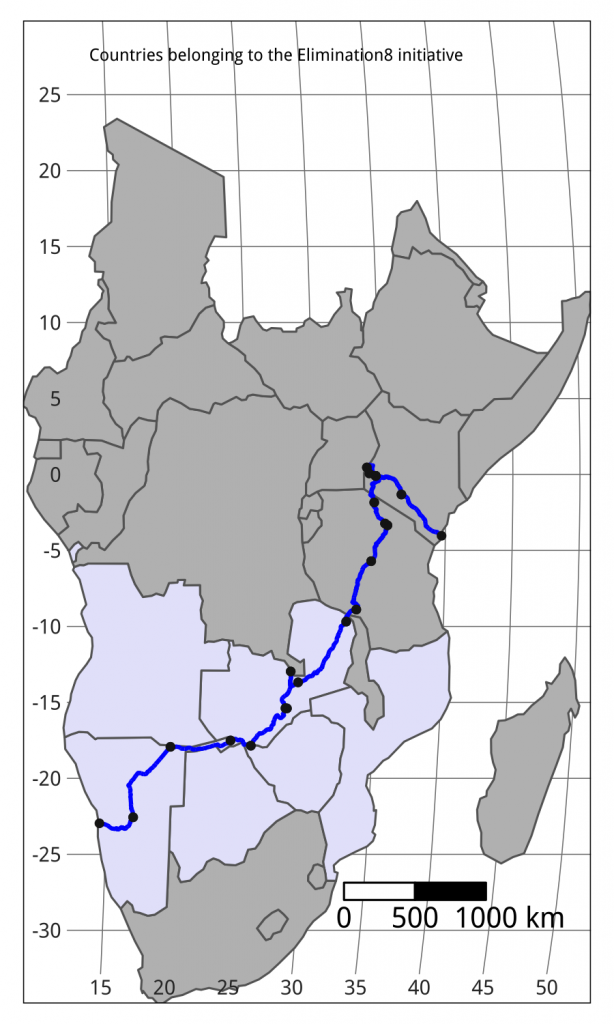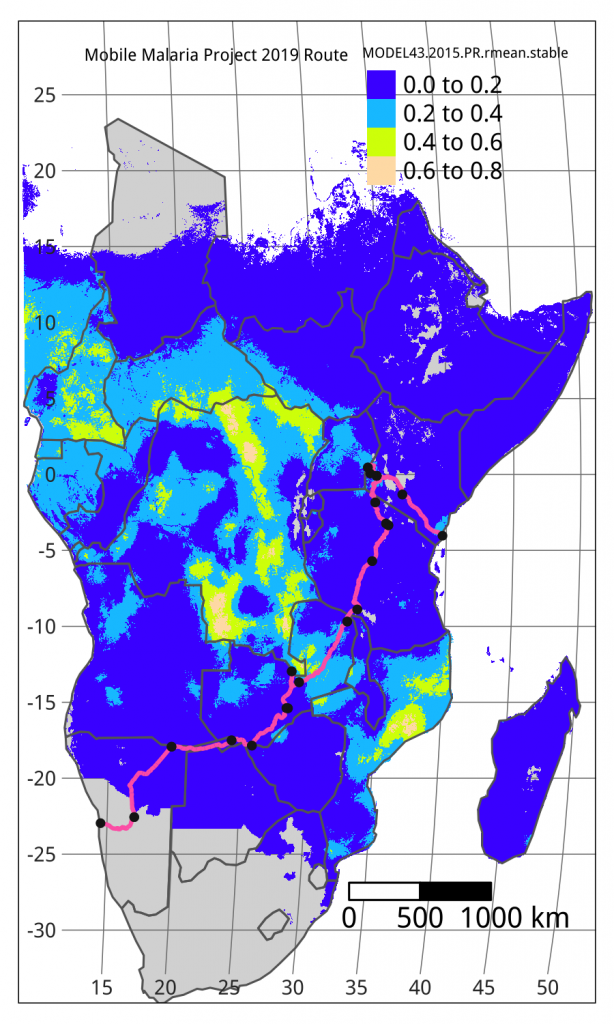Our route was designed to take the team coast to coast across Africa. We traveled 7,500km from Namibia, through Zambia and Tanzania, to Kenya. This took us from a region of low malaria prevalence in near-elimination Namibia through increasing levels of malaria prevalence in Zambia, Tanzania and Lake Victoria in Kenya, before finishing at the east coast Kenyan town of Kilifi.
N A M I B I A
TARGET MALARIA ELIMINATION DATE: 2020
Despite almost half of the population of Namibia living in areas of high malaria transmission, in 2016 there were an estimated 120 deaths from malaria, out of a population of 2.5 million.
Z A M B I A
TARGET MALARIA ELIMINATION DATE: 2021
Malaria transmission is high across Zambia. Consequently, of the 16.5 million people living there in 2016, there were an estimated 3 million cases and 7,000 deaths from malaria.
Zambia recently announced a new strategy for and slashed its target elimination date from 2030 to 2021.
T A N Z A N I A
TARGET MALARIA ELIMINATION DATE: 2030
In Tanzania, malaria is the leading cause of morbidity and mortality, especially in children under 5 and pregnant women. Malaria is also the leading cause of outpatients, inpatients, and admissions of children less than five years of age at health facilities.
Monitoring parasite and mosquito populations to identify and contain resistance will be an important part of Tanzania’s strategy to disrupt malaria transmission as it aims for elimination in 2030.
K E N Y A
TARGET MALARIA ELIMINATION DATE: 2030
Malaria burden in Kenya is highly heterogeneous. An estimated 3.5 million cases and 10,000 deaths from malaria occurred in 2016, out of a population of 48 million.



